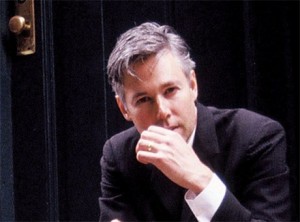MCA from Beastie Boys dead at 47
Adam Yauch (the gravelly voiced Beastie Boys rapper and the most conscientious member of the seminal hip-hop group) has died. He was 47.
Yauch’s representatives confirmed that the rapper died Friday morning in New York after a nearly three-year battle with cancer.
Also known as MCA, Yauch was diagnosed with a cancerous salivary gland in 2009.
At the time, Yauch expressed hope it was “very treatable,” but his illness caused the group to cancel shows and delayed the release of their 2011 album – “Hot Sauce Committee, Pt. 2.”
He hadn’t performed in public since 2009 and was absent when the Beastie Boys were inducted into the Rock and Roll Hall of Fame last month.
“Adam Yauch was a pioneer who broke ground with his music and introduced hip-hop to a wider audience” – said Terry Stewart, president of the Rock and Roll Hall of Fame.
Yauch (known as MCA in the legendary group, was diagnosed with cancer in 2009) and had been in treatment.
Yauch formed the Beastie Boys in 1979 with Adam (AdRock) Horowitz and Mike (Mike D) Diamond. On Friday, a posting on the band’s website expressed “great sadness” at the loss of the musician, rapper, activist and director.
The rapper had recently become a vegan on the recommendation of Tibetan doctors, and had undergone radiation therapy and surgery for his cancer, which affected his salivary gland and a lymph node.
Yauch’s death comes just two weeks after the Brooklyn hip-hop icons were inducted into the Rock and Roll Hall of Fame. Yauch was notably absent when the Beastie Boys were honoured at the ceremony on April 14 in Cleveland.
His bandmates attended, though they declined to perform out of respect for their absent friend.
The band’s induction into the Rock and Roll Hall of Fame will air on HBO tonight.
The Beastie Boys’ current album, Hot Sauce Committee Part 2, was released in April 2011. At the time, it seemed that Yauch’s cancer treatment had been a success. Unfortunately, Yauch revealed that same year that he was still far from 100 per cent. In a 2011 blog post on the Beastie Boys website, Yauch wrote – “Hello My Friends While I’m grateful for all the positive energy people are sending my way, reports of my being totally cancer free are exaggerated. I’m continuing treatment, staying optimistic and hoping to be cancer free in the near future.”
The Beastie Boys have released eight albums since 1979.
Adam “MCA” Yauch was co-leader of the Beastie Boys, a New York City trio that transformed hip-hop. But just as significantly, the group and especially Yauch transformed themselves, providing a model for how artists can mature and grow as people without losing their credibility or relevance.
“Role model” – Yauch, who died Friday at age 47 after a three-year battle with throat cancer, would have hated that term. But he became one almost in spite of the Beastie Boys’ early reputation as foul-mouthed innovators.
“To become this gentle Buddhist soul who literally would not step on a fly was something else” – said his friend, Rage Against the Machine guitarist Tom Morello, shortly after the news of Yauch’s death was announced. “His commitment to social justice and especially to Tibet’s freedom put it on the map for an entire generation of people.”
Michael “Mike D” Diamond, Adam “Ad-Rock” Horowitz and Adam “MCA” Yauch were still in their mid-teens when they formed a hardcore punk band in New York City during the early 80′s, before crossing over into hip-hop.
At the time, it wasn’t exactly commonplace for white kids to be rapping, but the cultural implications “didn’t really occur to us at the time” – Diamond once told the Tribune. “The early rap shows we did were in front of all-black audiences. We’d be in small clubs in Queens or Brooklyn, opening for Kurtis Blow or somebody like that, and they’d look at us like we were nuts.”
They hooked up with Rick Rubin, a New York University student who would start the Def Jam label out of his college dorm room. Their first full-length album, “Licensed to Ill,” was issued in 1986 and met with a mix of acclaim and derision, equal parts Led Zeppelin, Grandmaster Flash and a more explicitly politically incorrect Marx Brothers. The headline over the Village Voice’s lead review said it all: “Three Jerks Make a Masterpiece.”
It went on to become the first hip-hop album to top 5 million sales while bridging the chasm between rock and rap. Essential to its appeal was the perception that the trio were, in fact, jerks: arrogant, loud, snotty, foul-mouthed. Transgression has always been a lynchpin of pop culture, and the trio’s demand – “You gotta fight . . . for your right . . . to party!” – became an 80′s MTV generation anthem. Their rhymes were clever, hilarious and sometimes just plain idiotic – forming a lethal combination with Rubin’s stockpile of rock guitar riffs. On a massive arena tour with Run-D.M.C., the Beastie Boys helped bust hip-hop out of the inner-city and storm the suburbs.
The 1989 follow-up, “Paul’s Boutique,” was a radical left turn and confirmed that the Beastie Boys were much more than just a one-hit wonder. With dense, sample-heavy production by the Dust Brothers, the Beastie Boys made an album that has often been described as hip-hop’s answer to the Beatles’ “Sgt. Pepper’s Lonely Hearts Club Band,” splicing together the history of funk and soul with countless pop-culture references and audacious, tag-team rhymes.
The group’s subsequent albums, including “Check Your Head” (1992) and “Ill Communication” (1994), affirmed the Beastie Boys’ place as a key band in alternative rock’s rise. They began blending live instrumentation with their expanding grasp of hip-hop’s roots, exploring everything from organ-fueled jazz instrumentals to rampaging hard-core.
